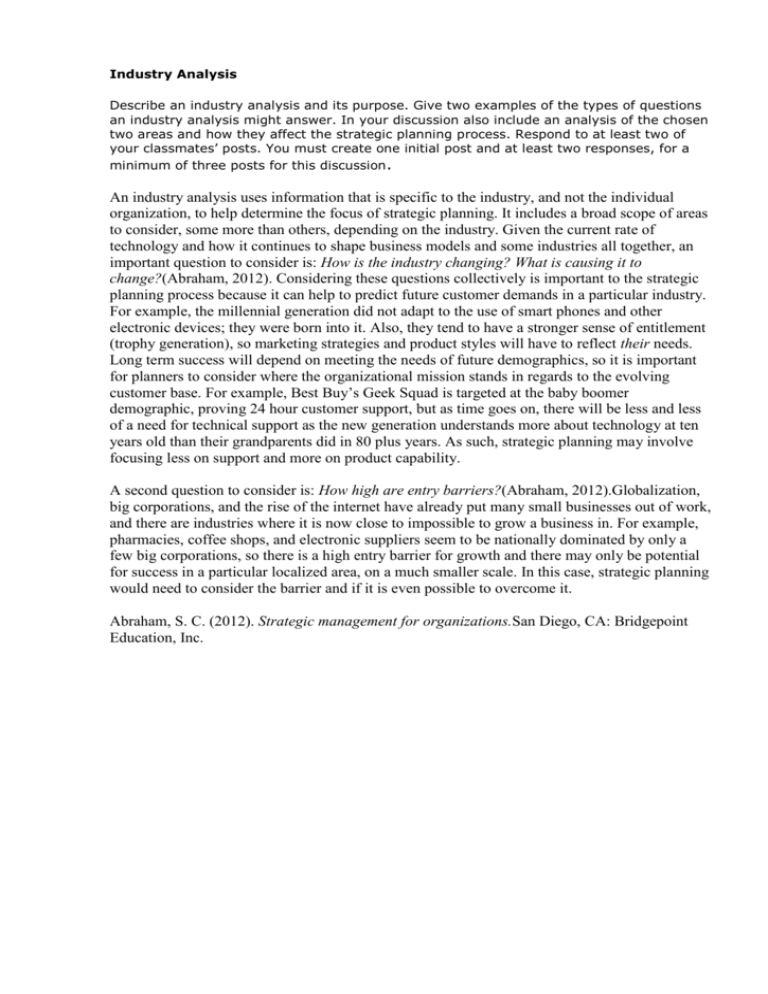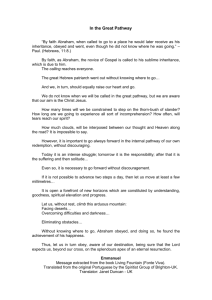MGT 450 Week 2 DQ 2 Industry Analysis
advertisement

Industry Analysis Describe an industry analysis and its purpose. Give two examples of the types of questions an industry analysis might answer. In your discussion also include an analysis of the chosen two areas and how they affect the strategic planning process. Respond to at least two of your classmates’ posts. You must create one initial post and at least two responses, for a minimum of three posts for this discussion. An industry analysis uses information that is specific to the industry, and not the individual organization, to help determine the focus of strategic planning. It includes a broad scope of areas to consider, some more than others, depending on the industry. Given the current rate of technology and how it continues to shape business models and some industries all together, an important question to consider is: How is the industry changing? What is causing it to change?(Abraham, 2012). Considering these questions collectively is important to the strategic planning process because it can help to predict future customer demands in a particular industry. For example, the millennial generation did not adapt to the use of smart phones and other electronic devices; they were born into it. Also, they tend to have a stronger sense of entitlement (trophy generation), so marketing strategies and product styles will have to reflect their needs. Long term success will depend on meeting the needs of future demographics, so it is important for planners to consider where the organizational mission stands in regards to the evolving customer base. For example, Best Buy’s Geek Squad is targeted at the baby boomer demographic, proving 24 hour customer support, but as time goes on, there will be less and less of a need for technical support as the new generation understands more about technology at ten years old than their grandparents did in 80 plus years. As such, strategic planning may involve focusing less on support and more on product capability. A second question to consider is: How high are entry barriers?(Abraham, 2012).Globalization, big corporations, and the rise of the internet have already put many small businesses out of work, and there are industries where it is now close to impossible to grow a business in. For example, pharmacies, coffee shops, and electronic suppliers seem to be nationally dominated by only a few big corporations, so there is a high entry barrier for growth and there may only be potential for success in a particular localized area, on a much smaller scale. In this case, strategic planning would need to consider the barrier and if it is even possible to overcome it. Abraham, S. C. (2012). Strategic management for organizations.San Diego, CA: Bridgepoint Education, Inc.











